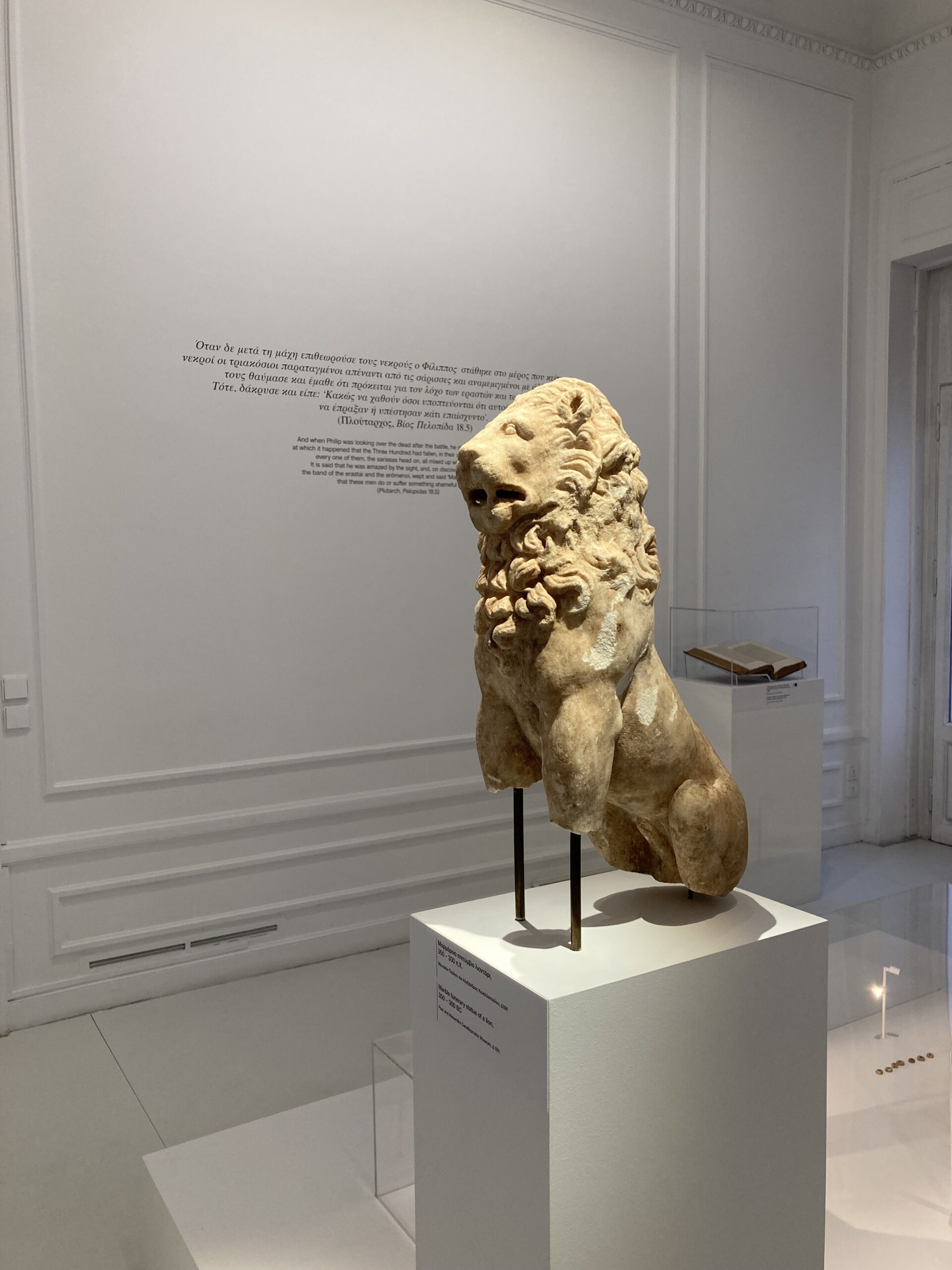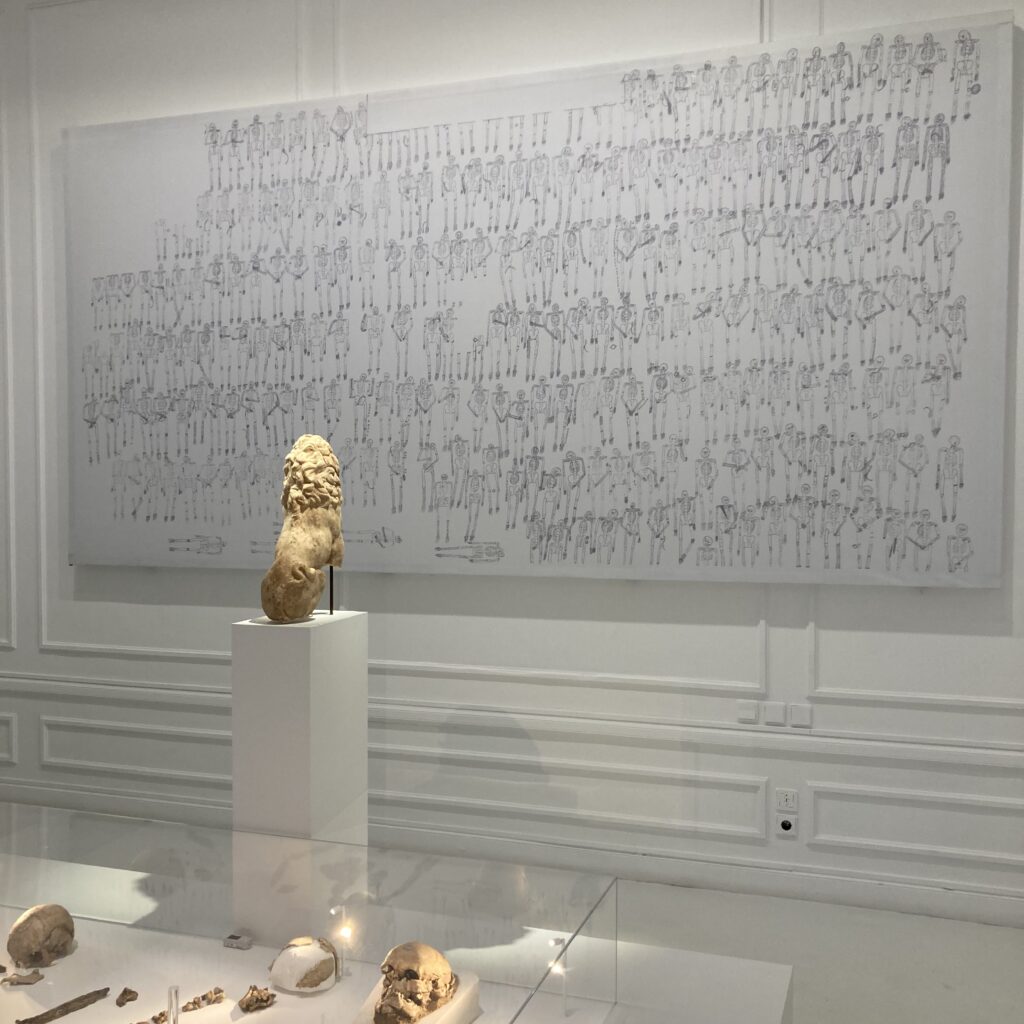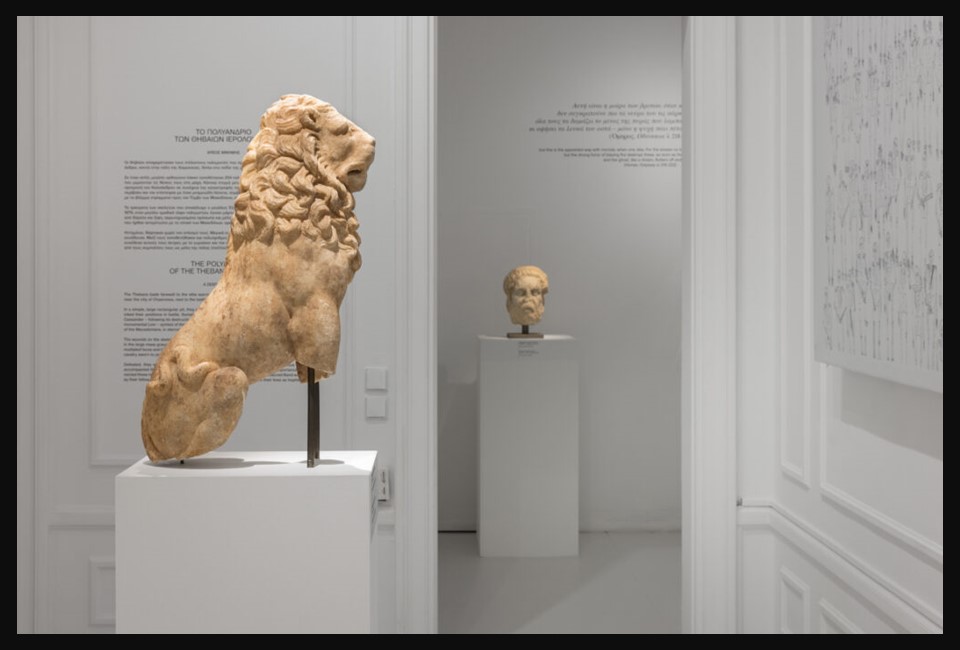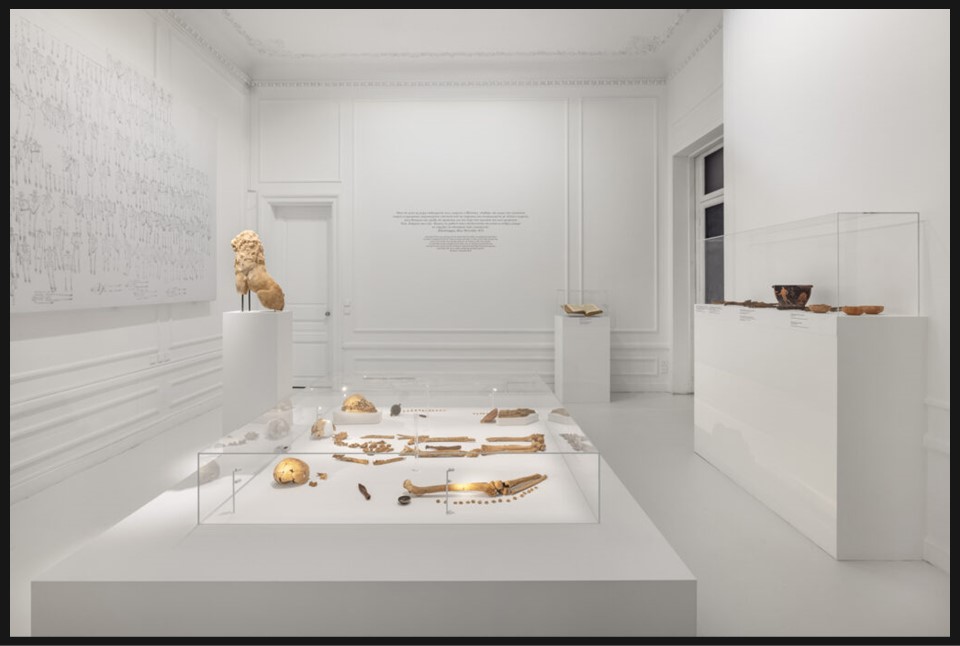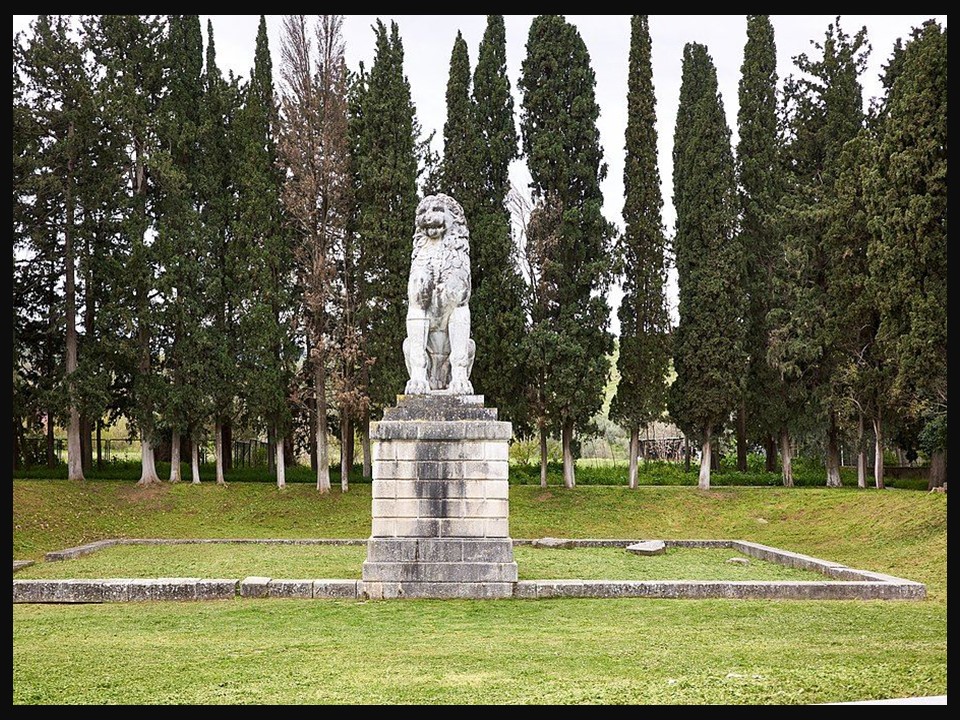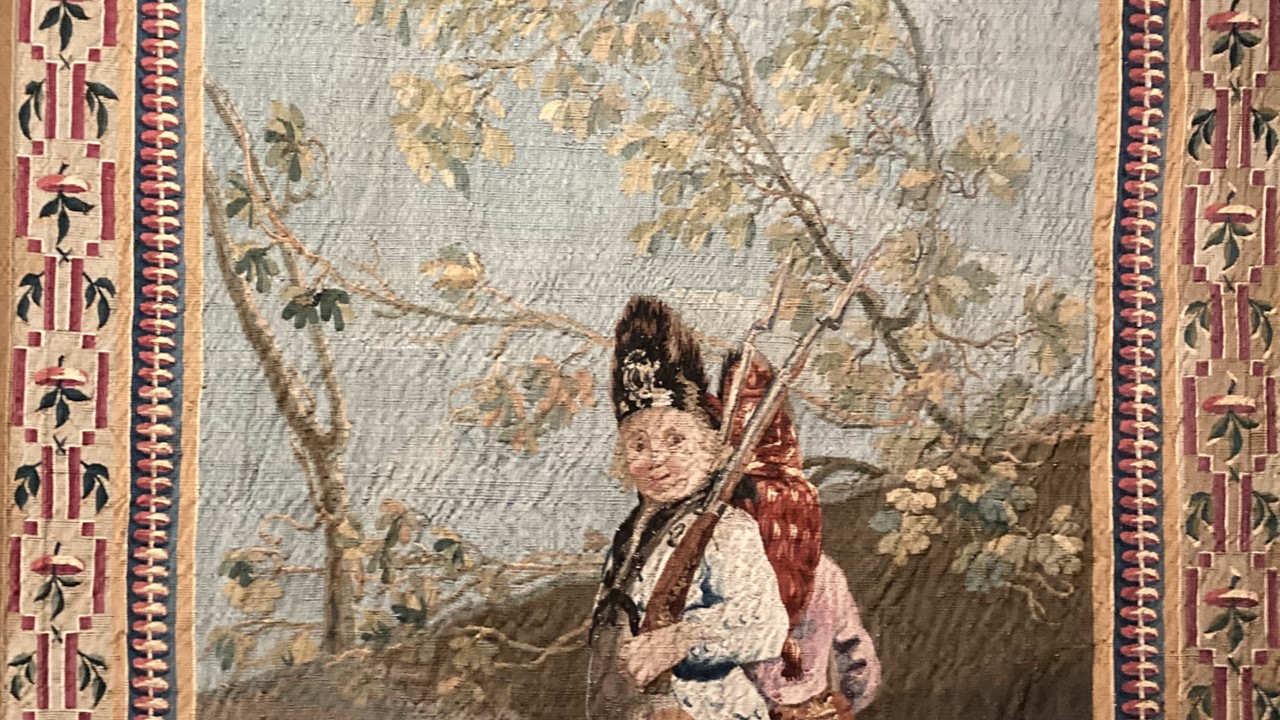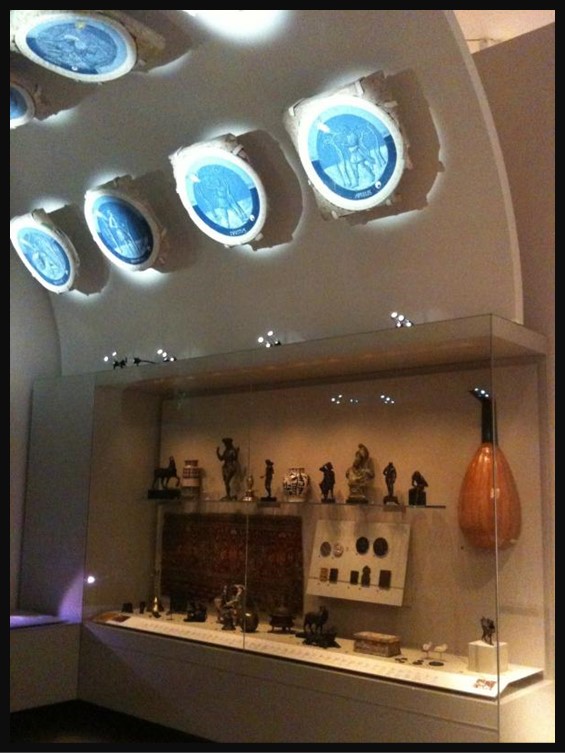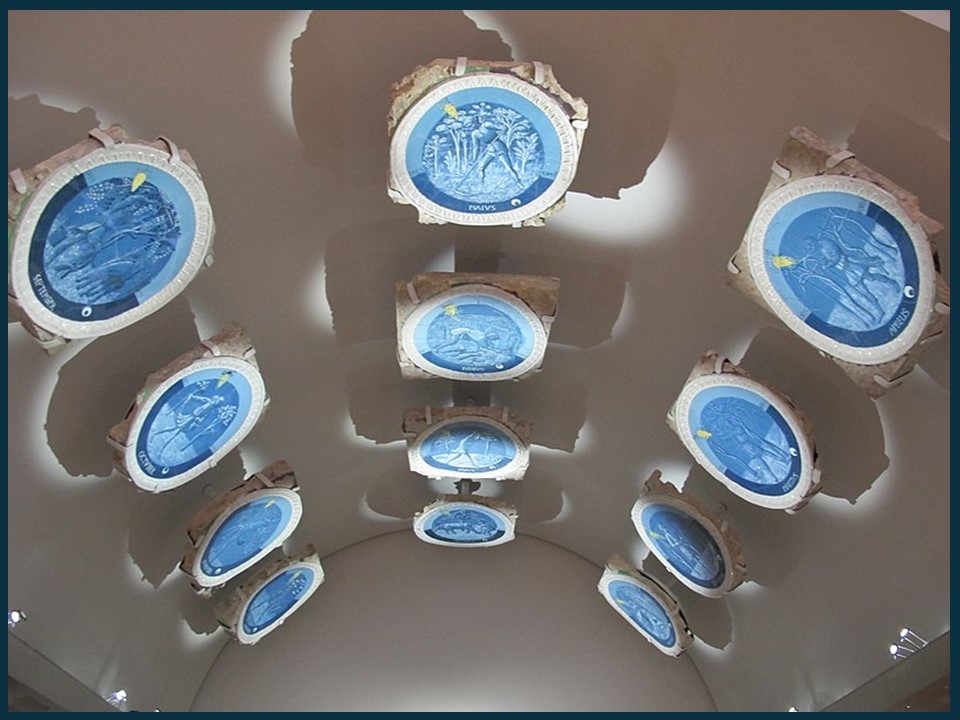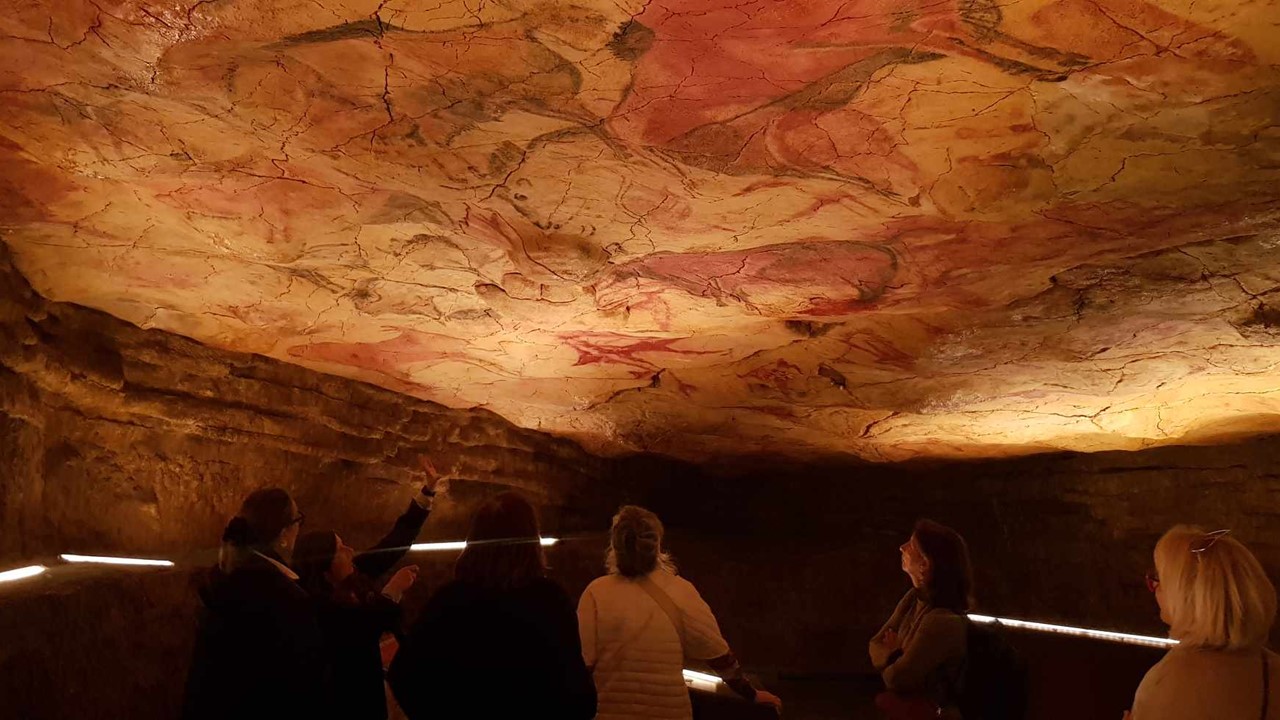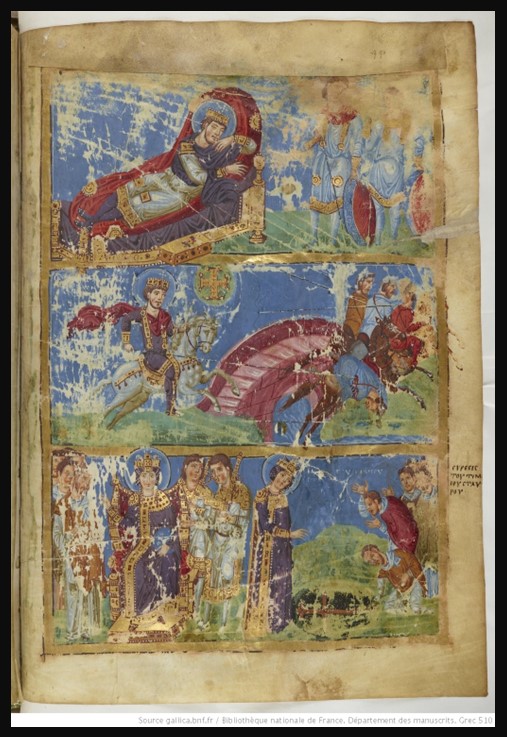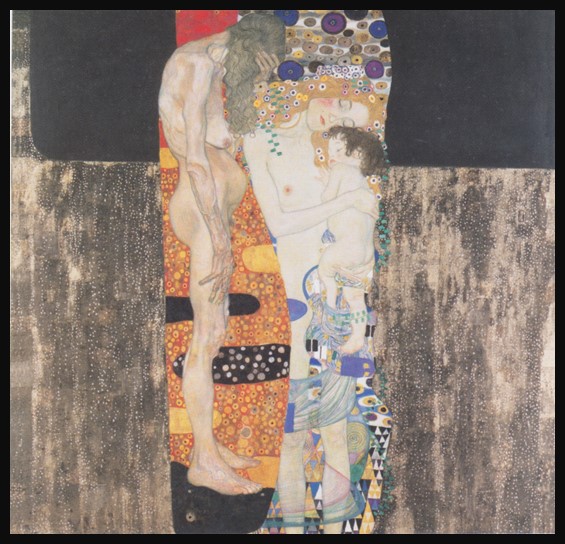
Knossos Veil, ca. 1906 – ca. 1930, Silk and Metal, 110 x 144 cm, Museo del Traje CIPE, Madrid, Spain https://twitter.com/MuseodelTraje/status/1528695788771201024/photo/1
Knossos Veil, ca. 1906 – ca. 1930, Silk and Metal, 110 x 144 cm, Museo Fortuny, Venice, Italy https://fortuny.visitmuve.it/it/il-museo/sede/la-sede-e-la-storia/
https://commons.wikimedia.org/wiki/File:Tenture_et_robe_de_Mariano_Fortuny_(Mus%C3%A9e_Fortuny,_Venise).jpg
Portrait of Henriette Nigrin wearing a Delphos gown and a Knossos Veil, 1935, Tempera on Wood, Palazzo Pesaro degli Orfei, Fortuny Museum, Venice, Italy
https://en.m.wikipedia.org/wiki/File:Henriette_Fortuny_par_Mariano_Fortuny_%28mus%C3%A9e_Fortuny,_Venise%29.jpg
Mariano Fortuny y Madrazo’s influence on fashion, reflected in his innovative approach to textile design and garment creation during the late 19th and early 20th centuries, lies in his belief that art should be personally meaningful… I do not want to waste my time, he used to say, with art that has no need of me… Renowned for his luxurious fabrics and intricate patterns, Fortuny revolutionized the fashion world with his signature pleating technique, which allowed the fabric to drape elegantly and maintain its shape without the need for heavy understructures. His iconic Delphos Gown along with The Knossos Veil, both inspired by ancient Greek attire, became symbols of haute couture, coveted by aristocrats and artists alike for their timeless beauty and unparalleled craftsmanship.

Fortuny, as he is popularly known, was a Spanish painter, set designer, photographer, inventor, and technology aficionado. He was born in Granada, Spain, into an artistic and intellectual family, on May 11, 1871. His father, Mariano Fortuny y Marsal, was a successful genre painter and an avid collector of antiquities and artefacts. His mother, Cecilia de Madrazo y Garreta, was a noted collector of textiles. Fortuny was only three years old when his father died and his mother decided to move to Paris so that her family would be close to her relative Federico ‘Cocò’ de Madrazo, an artist in the circle of Serge Diaghilev’s Ballets Russes.
Growing up in a very artistic and theatrical environment, Fortuny early developed one of his two passions, that of how to apply the latest lighting technology to establishments of the performing arts and galleries of art. Amidst an era dominated by gas illumination, his keen interest in electricity and its applications, particularly within the realm of stage design, led him to develop a revolutionary indirect lighting system known as the “Fortuny Dome,” which he patented in 1901. His innovation of an indirect electric lighting system, capable of emulating the nuances of natural daylight, reshaped the theatrical experience for audiences. This system became widely used in theatrical productions and is still appreciated for its ability to create atmospheric lighting effects.

Knossos Veil, ca. 1906 – ca. 1930, Silk and Metal, 110 x 144 cm, Museo del Traje CIPE, Madrid, Spain https://twitter.com/MuseodelTraje/status/1528695788771201024/photo/1
In 1888 Mariano Fortuny moved to Venice, where the family interest in antique textiles reignited. His wife Henriette Nigrin, a young woman who he had met in Paris, and who shared his aesthetics, and the family collection of ancient textiles inspired him to explore his second passion, the world of fashion. In 1906 he opened his textile/fashion workshop at the Palacio Pesaro degli Orfei creating original fabrics and costumes using modern techniques, with his own patents, and secrets, impossible to solve even today.
His wife, Henriette Negrin, was a talented and influential figure in her own right. Born in Paris to a family of Sephardic Jewish descent, she married Fortuny in 1902, becoming his lifelong partner and collaborator. Henriette was renowned for her skills in textile design and fashion, contributing significantly to the success of Fortuny’s textile workshop in Venice, Italy. Together, they perfected the intricate techniques behind the iconic Fortuny fabrics, known for their rich colours, luxurious textures, and timeless elegance. Henriette’s creative vision and business acumen played a pivotal role in expanding the reach of Fortuny’s designs, garnering acclaim from royalty, celebrities, and discerning patrons worldwide. Her enduring partnership with Mariano Fortuny y Madrazo underscored their shared commitment to artistic excellence and innovation in the realms of fashion and design.

https://artsandculture.google.com/asset/model-for-the-knossos-scarf-mariano-fortuny/_AFs03WjdU506A

The Knossos Veil emerged as Mariano and Henriette Fortuny’s inaugural foray into the world of textile and clothing design, marking a pivotal moment in their career, and establishing their reputation as masters of their craft. This creation, inspired by the ancient Greek himation, was a substantial piece of printed silk taffeta, measuring an impressive 450 cm in length and 110 cm in width. Its design showcased an extraordinary commitment to craftsmanship, experimentation, and innovation, featuring motifs that spanned early-Corinthian, Minoan, and Archaic Greek influences, including papyrus flowers, heart-shaped palms, stylized flora, octapus and argonaut designs. These patterns, indicative of Fortuny’s fascination with ancient civilizations, were meticulously derived from Minoan fresco and vase painting, encapsulating a blend of historical reverence and artistic ingenuity.
The unveiling of the first prototypes of the Knossos Veil during the ballet for the opening of the Countess of Béarn’s private theater in Paris on March 29, 1906, marked the beginning of its storied history. However, it was the presentation in Berlin on November 24, 1907, that truly showcased the scarf’s allure and versatility, with the legendary American dancer Ruth St. Denis demonstrating the myriad ways it could be adorned, from headdresses to gowns, epitomizing the scarf’s fluid beauty and elegance. The Knossos models were whimsically named… “Alblan,” “Aldou,” “Algan,” “Alro,” “Gandou,” and “Tilleul”… each evoking an air of mystique and otherworldliness, as if conjured from a spellbook.

Henriette Negrin, Fortuny’s wife and muse played a critical role in the scarf’s development and was famously immortalized wearing it in a large painting by Fortuny, titled Portrait in Pompeian Costume. This collaboration between Mariano and Henriette not only underscored the depth of their partnership but also highlighted the Knossos Veil’s significance as a versatile and innovative piece that bridged the gap between historical inspiration and contemporary fashion.
The Knossos Veil remains a symbol of Fortuny’s legacy in the fusion of art, history, and fashion, a testament to his and Henriette’s extraordinary vision and creativity.
For a Student Activity, inspired by Fortuny’s Knossos Veil, please… Check HERE!
For a former, July 17, 2020, Teacher Curator Presentation on Fortuny’s Delphos Dress, titled When Fashion becomes Art, please Check… https://www.teachercurator.com/20th-century-art/when-fashion-becomes-art/?fbclid=IwAR338hgUJsJtyH8g3Jz3FY94sxVQFrYhG6S-NQhaW2rKFhwbqNQG9wdRA8w_aem_AZylhUe8XI9z7o2vFhteSLotU8lONi8gw48QfZxF2KaChzmSgMuEUCRast8kH0_zgk4UDd-TkYSDjA_CD2A3SyA2
Bibliography: https://www.palaisgalliera.paris.fr/sites/galliera/files/cp_dp_visuels/dossiers_de_presse/dp_fortuny_eng_bdef.pdf and https://artsandculture.google.com/story/JgWBsAjx7KyuJg?hl=en and https://www.fortuny.shop/blog/mariano-fortuny/the-fortuny-dome-a-revolution-in-the-theatre/ and https://artsandculture.google.com/story/ZQVxXe7qWmpwKg?hl=en and https://www.academia.edu/5421220/%CE%9C%CE%B9%CE%BD%CF%89%CE%B9%CE%BA%CF%8C%CF%82_%CE%BD%CE%B5%CF%89%CF%84%CE%B5%CF%81%CE%B9%CF%83%CE%BC%CF%8C%CF%82_%CE%97_%CE%B1%CE%B9%CE%B3%CE%B1%CE%B9%CE%B1%CE%BA%CE%AE_%CF%84%CE%AD%CF%87%CE%BD%CE%B7_%CE%BA%CE%B1%CE%B9_%CE%B7_art_nouveau_%CE%B7_%CF%80%CE%B5%CF%81%CE%AF%CF%80%CF%84%CF%89%CF%83%CE%B7_%CF%84%CE%BF%CF%85_Mariano_Fortuny_y_Madrazo (in Greek)





